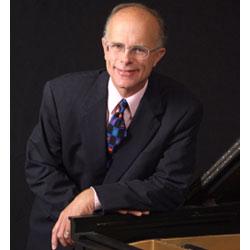
Todd Wilson has been appointed director of music and worship at Trinity Cathedral, Cleveland, Ohio. He will replace Horst Buchholz, who has accepted the position of director of music at the Cathedral Basilica of St. Louis.
Wilson has been Trinity’s organist and artist-in-residence since late 2009. A native Ohioan, he has been director of music at the Church of the Covenant in Cleveland and organist and choirmaster at Calvary Episcopal Church in Cincinnati.
Todd Wilson grew up singing in the men and boys choir of Trinity Episcopal Church in Toledo. During 1978–79 he served as a visiting assistant in music at Canterbury Cathedral in England under Allan Wicks. At the Cathedral of the Incarnation (Episcopal) on Long Island, Wilson directed one of the longest-running choirs of men and boys in continuous existence in the United States.
Wilson is also organ curator of the recently restored Norton Memorial Organ (E. M. Skinner, 1931) at Severance Hall, and is house organist at Stan Hywet Hall and Gardens in Akron, where he plays the restored 1915 Aeolian organ.
He has been heard in concert in many major cities throughout the United States, Europe, and Japan, including concerts at Symphony Hall (Birmingham, UK), Los Angeles’ Walt Disney Concert Hall, Chicago’s Orchestra Hall, Cleveland’s Severance Hall, Dallas’s Meyerson Symphony Center, and Uihlein Hall in Milwaukee.
Wilson’s latest CDs were released in 2005. One is on the JAV label, featuring American music from the National Cathedral in Washington, D.C. The other is entitled “Live from Severance Hall” and features music for trumpet and organ with Michael Sachs, principal trumpet of the Cleveland Orchestra.
Wilson received his bachelor and master of music degrees from the College-Conservatory of Music at the University of Cincinnati and completed further study at the Eastman School of Music. He has won numerous competitions, including the French Grand Prix de Chartres, the Fort Wayne Competition, the Strader National Scholarship Competition, and the national competition sponsored by the First Congregational Church of Los Angeles.
Todd Wilson is represented by Karen McFarlane Artists (www.concertorganists.com).

